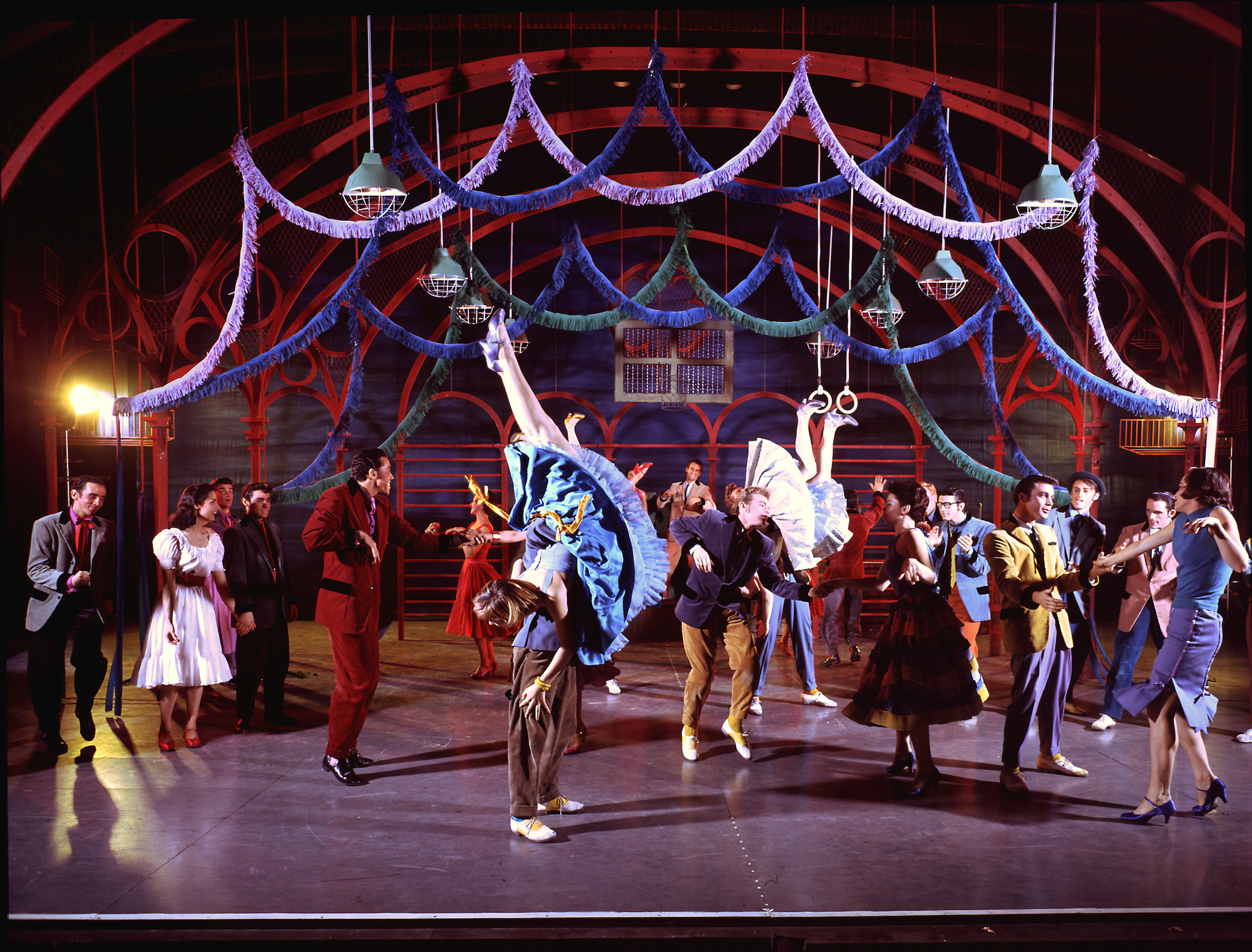‘West Side Story’: Filming Was So Grueling the Dancers Burned Their Kneepads
Had 2020 gone as originally planned, the remake of West Side Story directed by Steven Spielberg would have been hitting theaters in just a few weeks. With the coronavirus (COVID-19) worsening, the new rumble between the Sharks and the Jets has been pushed back to December of next year.
In the meantime, fans still have the 1961 movie to watch on Netflix and on Amazon Prime, and that’s prompted renewed interest in the film, which did not have an easy road to the big screen. Among many other problems, legendary director and choreographer Jerome Robbins was fired from directing the film after his reputation as a taskmaster proved overbearing.

How did ‘West Side Story ‘move from stage to screen?
Broadly speaking, West Side Story is a musicalization of William Shakespeare’s tragedy Romeo and Juliet. Here, the warring families of the Capulets and the Montagues are replaced by warring street gangs, the white Jets and the Puerto Rican Sharks. In the ’50s there was an influx of Puerto Ricans moving to New York City, so that became the jumping-off point for the story, with the Jets trying to defend their turf. A former member of the Jets, Tony falls hard for Maria, the sister of one of the Sharks. This does not go well with either side.
The idea for the show came from Jerome Robbins, whose numerous credits include On the Town, The Pajama Game, Gypsy, and Fiddler on the Roof. Robbins pitched the idea to equally legendary composer Leonard Bernstein. The show opened on Broadway in 1957. It was nominated for multiple Tonys, but it lost Best Musical to another beloved show, The Music Man.
The movie adaptation starring Russ Beymer, Natalie Wood, George Chakiris and Rita Moreno, came along in 1961, and that did win the top prize at the Academy Awards that year, with Robbins sharing the Best Director Oscar with Robert Wise. However, their teaming was not a happy one.
Why did dancers burn their kneepads?
Both the theater world and the film world have taskmasters, but for the West Side Story movie, Robbins was at a disadvantage. He had never directed a film before, and the producers were less apt to put up with the rampant perfectionism he was known for on stage. According to Ranker, Robbins kept demanding multiple takes, and this did not sit well with either the performers or the producers.
For one thing, Robbins was shooting on 70-millimeter film, so burning through multiple takes was even more expensive than usual. For another, Robbins was putting the dancers through the wringer. This is not unheard of onstage or on film, but the dancers were so bruised and battered they held a ceremony to burn their kneepads after filming the number “Cool”- in Robbins’ presence, no less.
Ultimately, the producers fired Robbins from the film, turning complete control of the movie over to veteran Robert Wise, who had made The Day the Earth Stood Still and would go on to direct The Sound of Music. Although Robbins retained a director credit and shared the Oscar, he would never direct another film again.
Why did Steven Spielberg remake ‘West Side Story?’
Hollywood seems so preoccupied with remakes and reboots these days that the thought of another one, especially of a beloved musical, has induced eye-rolling. When the director is Steven Spielberg, however, attention will still be paid. Spielberg has always wanted to make a musical, but the only one of his movies that has a Broadway-style musical number is the opening of Indiana Jones and the Temple of Doom.
“This story is not only a product of its time, but that time has returned, and it’s returned with a kind of social fury,” Spielberg told Vanity Fair. “I really wanted to tell that Puerto Rican, Nuyorican experience of basically the migration to this country and the struggle to make a living, and to have children, and to battle against the obstacles of xenophobia and racial prejudice.” The movie’s new release date is December 10, 2021.


